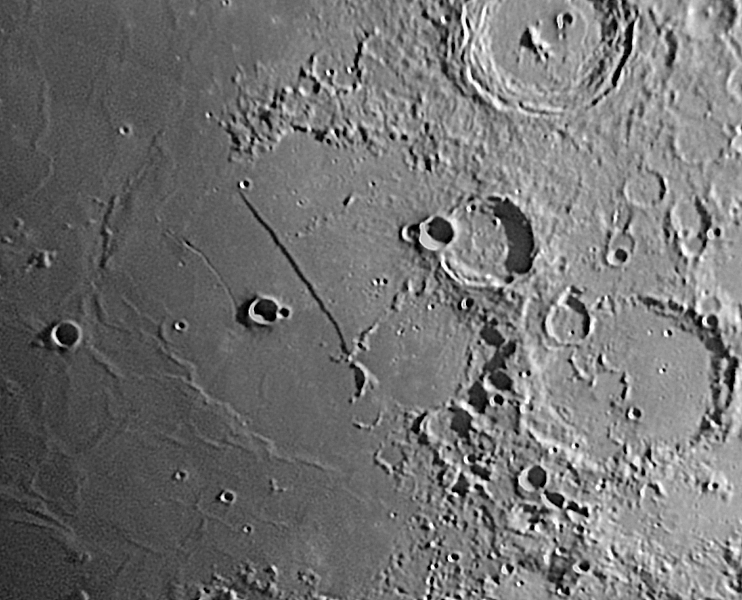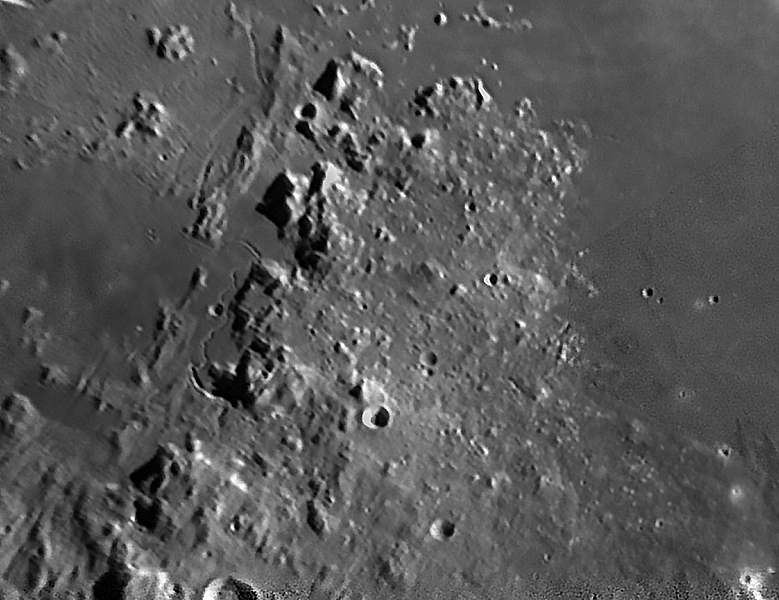Had another go at processing the M27 data, managed to drag out some more detail:
M27 (NGC6853) reprocessed.
Subs: 22 light @ 120s, 22 dark @ 120s and 20 flat @ 2s, all ISO200.
D50 and MPCC on the C8N, guided with PHD.
Had another go at processing the M27 data, managed to drag out some more detail:
M27 (NGC6853) reprocessed.
Subs: 22 light @ 120s, 22 dark @ 120s and 20 flat @ 2s, all ISO200.
D50 and MPCC on the C8N, guided with PHD.
OK, here's the third and final couple of pics, the target was M27 (aka The Dumbbell Nebula, NGC6853), a planetary nebula in the constellation of Vulpecula. Again, you get one version with the diffraction spikes and another without. Click 'em for more bigness:
M27 (NGC6853) as processed.
Subs: 22 light @ 120s, 22 dark @ 120s and 20 flat @ 2s, all ISO200.
D50 and MPCC on the C8N, guided with PHD.
As previous but with added spikes.
That's yer lot.
OK, here's the second couple of pics, the target was M29 (aka NGC6913), an open cluster in the constellation of Cygnus. You get one version with the diffraction spikes and another without. Click 'em for more bigness:
M29 (NGC6913) as processed.
Subs: 41 light @ 60s, 41 dark @ 60s and 20 flat @ 2s, all ISO200.
D50 and MPCC on the C8N, guided with PHD.
As previous but with added spikes.
There's even more...
I managed to escape from the house last night and took refuge in my obsy. The skies weren't particularly clear, mainly due to the pending moon-rise, and the seeing was only middling, but I managed to get some dSLR pics of some Messier objects. For the first time I took some flat-frames as well as the customary lights and darks, it wasn't the hassle that I thought it would be, mainly due to me thinking laterally and adapting the "white tee-shirt method" by using a white microfibre cloth over the end of the scope.
The results are worth the extra effort, I reckon - there's less hassle trying to get Photoshop to correct the vignetting inherent in images of this kind. I'll probably knock-together some sort of white-screen contraption for the end of the scope now that I've got a better idea of what works.
Here's the first couple of pics, the target was M13 (aka The Hercules Globular Cluster, NGC6205) and it looks like I've managed to catch the faint smudge of NGC6207 near the top edge of the uncropped version:
M13 (The Hercules Globular Cluster, NGC2605) in the centre, NGC6207 to the upper-left(ish).
Subs: 50 light @ 60s, 50 dark @ 60s and 20 flat @ 2s, all ISO200.
D50 and MPCC on the C8N, guided with PHD.
Cropped version
There's more...
The skies on Thursday evening weren't the clearest I'd ever seen, there being a light haze obscuring the stars. The Moon, however, was reasonably clear, and with the seeing being fairly good I decided to do a bit of crater-spotting. In order to get a good look before the target went out of the field of view of the scope, I had to start before the sun went down, but that didn't seem to be an issue.
During the unusually short session I managed to see and image quite a few features, following is a small selection of what was on offer (mouseover for the occasional annotated versions).

Rupes Recta (Straight Wall) (67 miles long)
FOV approx 256 x 196 miles

Rima Hyginus (133 miles long)
FOV approx 275 x 185 miles

Timocharis (21 miles dia.)
FOV approx 113 x 82 miles

Eratosthenes (35 miles dia.)
FOV approx 90 x 76 miles

Hadley Rille and Apollo 15 landing site
FOV approx 181 x 156 miles

Apollo 16 landing site
FOV approx 146 x 133 miles
Just in case you don't know your way around up there, here's some help:
